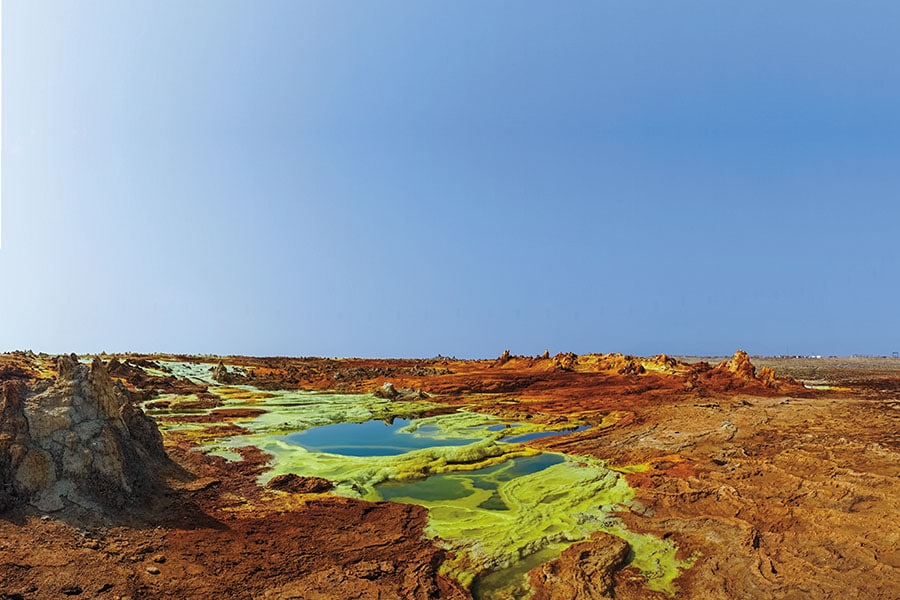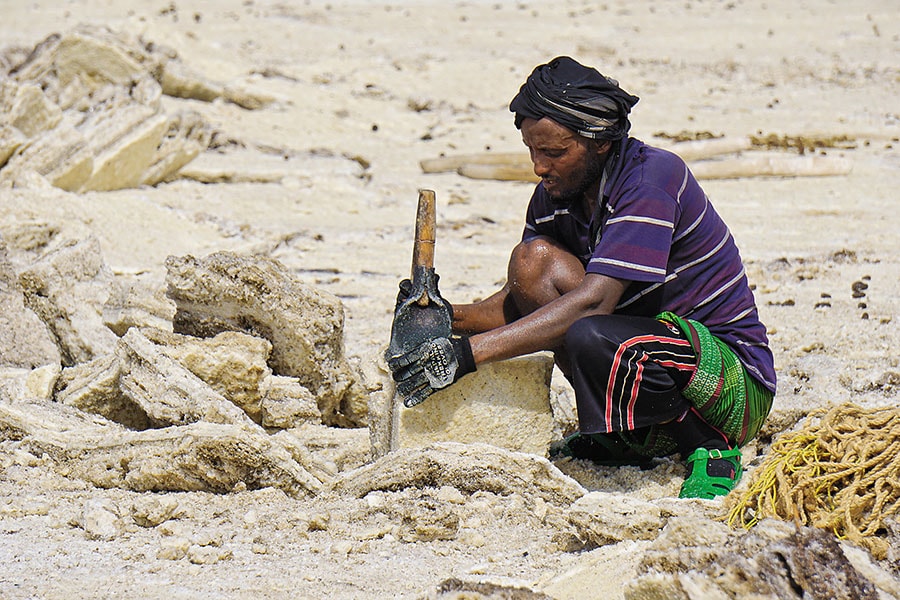
Travel: In Ethiopia, psychedelic lands that feel like Mars
In the country's north lies the Danakil Depression, a surreal landscape showcasing the operatic rendition of nature, red and orange and yellow in tooth and claw
 The colourful volcanic landscape of Dallol in Ethiopia’s Danakil Depression
The colourful volcanic landscape of Dallol in Ethiopia’s Danakil DepressionImage: Eric Lafforgue/ Art in all of us/ Corbis via Getty images
The ground erupted like kernels of buttery popcorn, crunchy to the touch. A haze of crimson and orange dirt surrounded us. Pools, the colour of disco lights, shone in the distance and whistling sulphurous vapours escaped from the ground.
One weekday morning in May, I looked at this operatic rendition of nature, red and orange and yellow in tooth and claw, and couldn’t look away. I had taken an incorrectly booked flight, an 11-hour road journey, a stop at the wrong hotel, endless power cuts and myriad other travellers’ troubles to get here. But riding on the back of those traumas and mishaps we were here now, and Africa’s psychedelic Dallol lay in front of us.
It felt like Mars, with its unfamiliar shapes and shades. Indeed, a paper in the science journal Astrobiology in March called it “an excellent Mars analog environment”, likening its conditions to our neighbouring planet. Dallol is a volcanic crater in the Danakil Depression of northern Ethiopia, one of the hottest, lowest places on earth. “The region”, the paper said, “is notable for hosting environments at the very edge of natural physical-chemical extremities.”
Extremities is the right word. Even the microbes that survive here in these conditions are known as “extremophiles”. Superlatives attach themselves easily to Danakil: Land of the highest average year-round temperature, host to one of the most acidic natural systems, receiver of among the scantiest amounts of rainfall. To this I could add another: Unlikeliest place on my itinerary.
*****
Until arriving in Ethiopia I hadn’t even heard of the Danakil Depression, let alone foster any desire to go there. Emerging from a complicated and violent history, the northern parts of the country were tense until recently because of the shared border with Eritrea, a breakaway country sundered from the coastal edge. Hunger and famine marked the 1980s, while a refugee crisis still bubbles internally. Ethnic tensions continue to thwart lasting peace.
(This story appears in the 30 August, 2019 issue of Forbes India. To visit our Archives, click here.)


_s.jpg?impolicy=website&width=122&height=70)

 A worker from the Afar tribe cuts salt into blocks near Asale Lake in the Danakil Depression; Image: Shutterstock
A worker from the Afar tribe cuts salt into blocks near Asale Lake in the Danakil Depression; Image: Shutterstock













